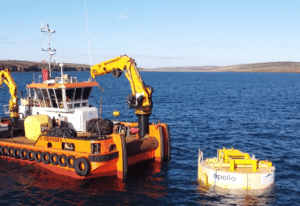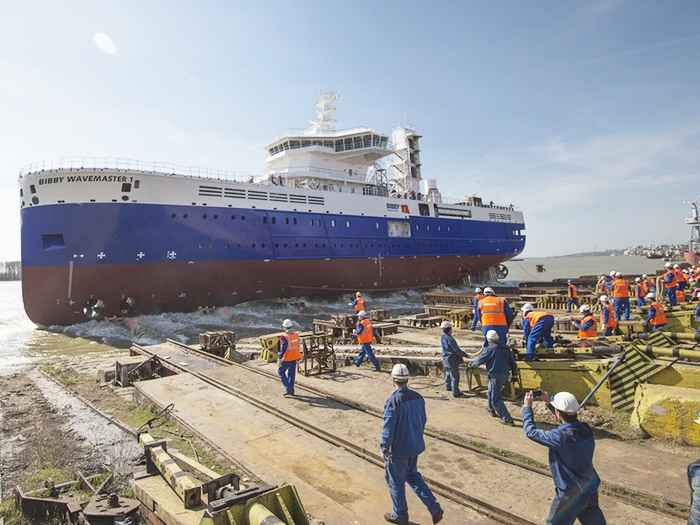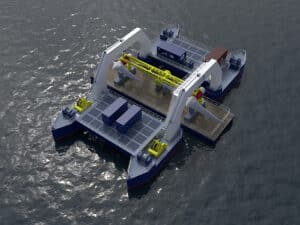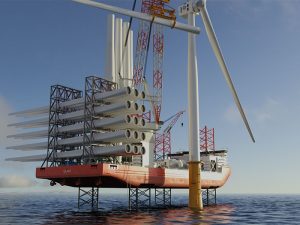
VIDEO: Damen launches walk-to-work wind farm SOV
Written by Nick Blenkey
MARCH 27, 2017 — Damen Shipyards Galati, Romania, has launched the Bibby WaveMaster 1, the first of Damen’s purpose-built offshore wind Service Operations Vessels (SOV) with Walk-to-Work (W2W) capability,.
When completed, Bibby Marine Services Limited, part of Bibby Line Group, will deploy the vessel to support forthcoming offshore wind construction and O&M projects in the North Sea.
“This is an important key milestone in the delivery of the vessel,” said Stephen Blaikie, Chief Executive Officer, Bibby Marine Services Ltd. “Sea trials will start soon and we will take delivery in August. We are very impressed with the quality of the build and the whole process has gone smoothly.”
Bibby WaveMaster 1 is built specifically for the transfer and accommodation of offshore personnel and aims to maximize working time, technician comfort and safety.
Equipped with DYNPOS (AUTR) DP2, the 90 m LOA vessel has a motion compensated access system (Walk-to-Work). During the construction process, Damen has continued to work closely with the client in customizing the vessel, for example, adjusting the design of the elevator to the W2W gangway. This now has six landings, meaning that technicians can directly access the gangway from the warehouse areas with a “stepless approach.”
A helideck, daughter craft and CTV landings (with refueling) complement the vessel’s versatility.
Also upgrading the vessel’s workrole flexibility, Damen has increased the number of persons on board (POB) to 90, from the 60 envisioned by the standard design.
Taking into account the trend for wind farms to go farther from the shore in more challenging seas, the customised design provides fast, safe and comfortable access to turbines, and at a lower cost, , including in worst case scenario severe Central North Sea conditions. This results in a vessel capable of providing turbine access up to 3.1 m Hs. The Damen SOV is able to remain at sea for periods of up to one month at a time.
Much attention has been paid to crew comfort on board the vessel. For example, the 90 m hull is longer than that of a conventional Platform Supply Vessel. This, combined with the 20 m beam and 4.6 m draft, offers substantially reduced motions in every direction.
The aft ship has been adapted specifically to the tasks that the vessel is designed for, including stern to waves operations. The strong V-shape and the slender aft ship make these operations much more comfortable than on a standard PSV design.
There are two large storage area for containers and this has been adapted so the SOV can also hold high cube containers.
Fuel efficiency is another key feature. The design includes a diesel-electric main propulsion system, which powers twin azimuth thrusters. Thanks to careful development, the vessel requires less installed power than a conventional PSV. This results from two factors – a symmetrical wind profile and use of a four split main switchboard.
Although primarily designed with offshore wind in mind, in the case of the Bibby WaveMaster 1, the carefully considered design means that the vessel is capable of a much wider scope of work in a variety of offshore industries.
Options available include an additional deck crane with up to a 24-tonne capacity, tank arrangements suited to liquids such as glycols and low flashpoint liquids with separate delivery intakes, and facilities for dive support and ROV operations.





Leave a Reply
You must be logged in to post a comment.